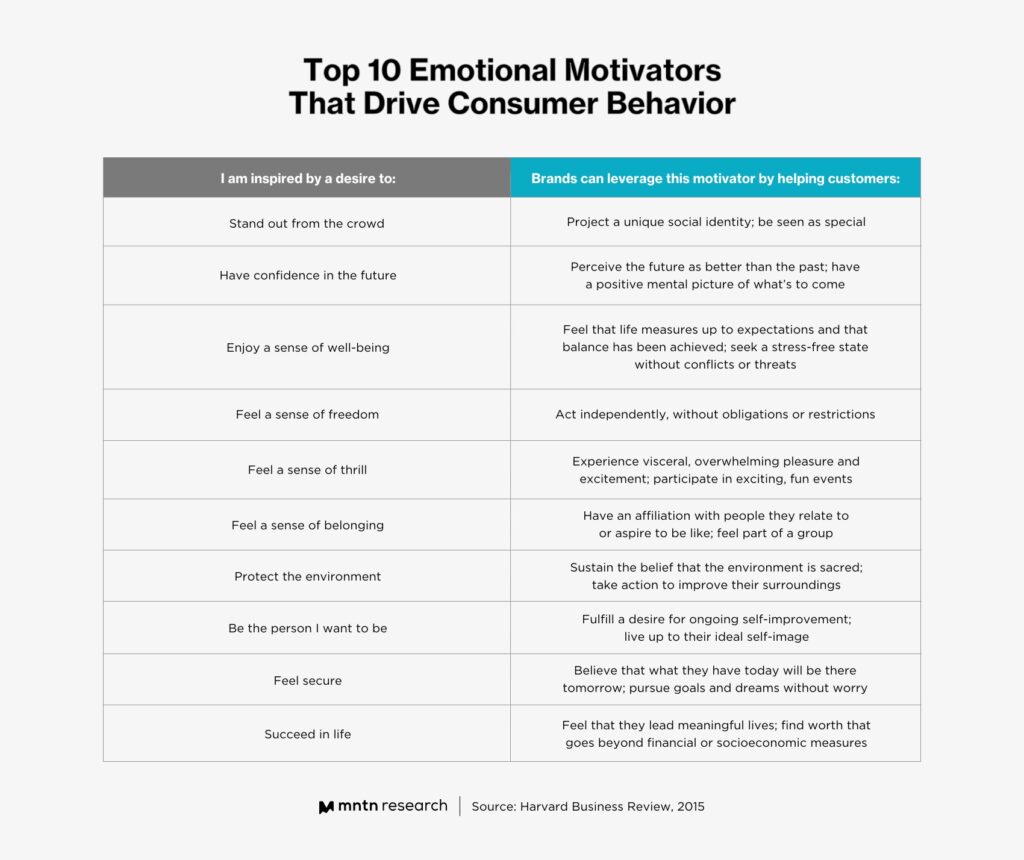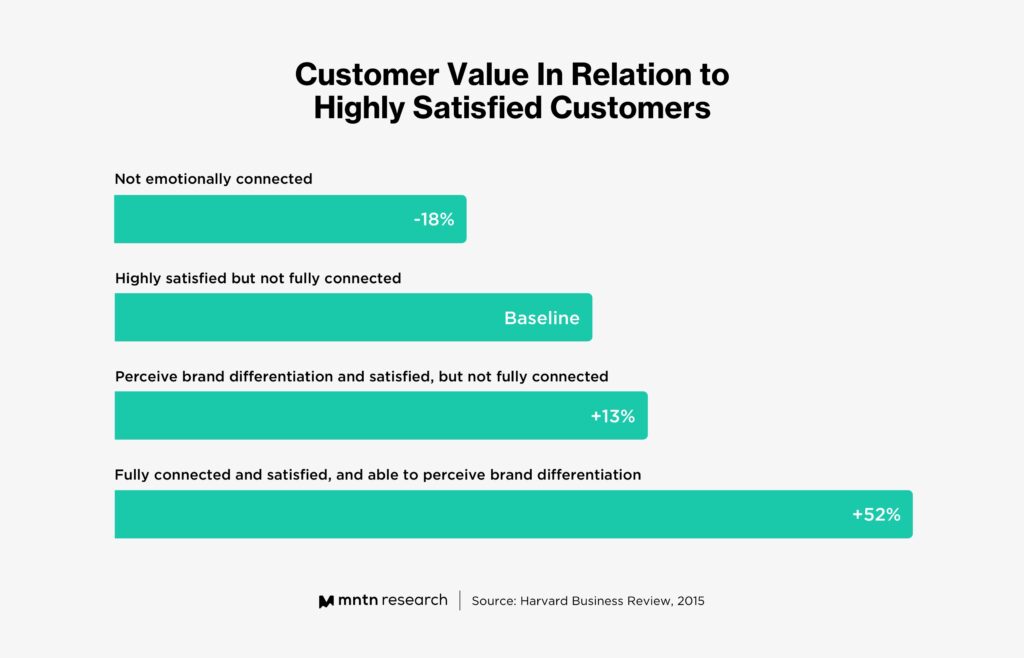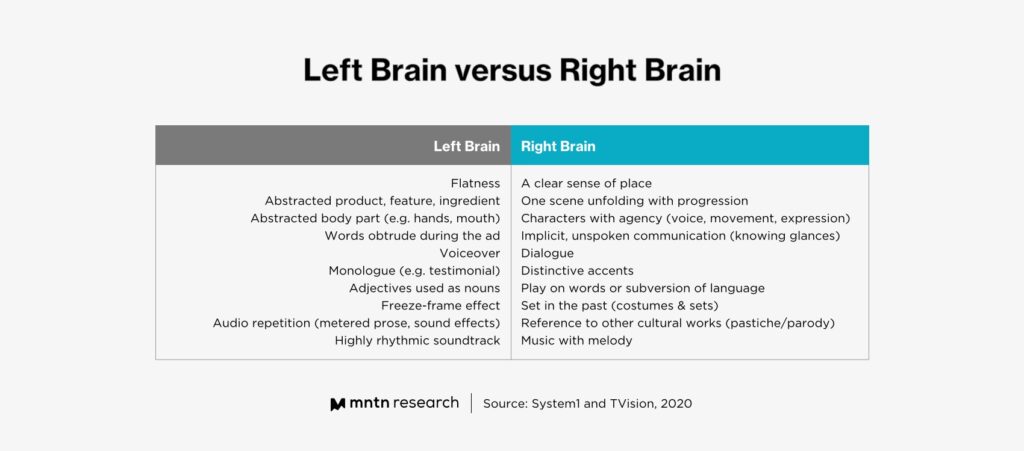Research Digest
Matching Ad Creative to the Consumer Mindset on Connected TV
by Melissa Yap5 min read
Abstract
- Advertisers should consider leveraging the emotional motivators and matching the psychological state of their audience when creating Connected TV ads
- Viewers respond more favorably to “energetic” television commercials, even despite ad placement within an advertising pod and other factors.
- “Right-brained” ads that incorporate talent or characters, and a sense of time and place, drive and sustain attention more than left-brained ads.
Understanding the Science Behind Consumer Mindset and Emotion
In order for advertisers to create value with their customers, they need to not only build connections, but also understand the ‘why’ in the way they feel. While having a solid brand can do a lot of the heavy lifting, it’s not enough on its own to produce desired, consistent results. A study by Harvard Business School over hundreds of brands across multiple industries including banking, food and beverage, travel and leisure, FMCG (fast moving consumer goods) and more, found that there are ten major “emotional motivators,” which provide a better indicator of a customers’ future value to a firm than any other qualitative metrics like brand awareness and customer satisfaction.
It is important to note that emotional connections with products aren’t all one or the same—they vary by industry, brand, touchpoint and the customer’s position in the decision journey. The table below maps out the top ten emotional motivators that drive customer behavior, which advertisers can use as a guide to help position their creative when planning their Connected TV campaign.

Overall, research found that customers become more valuable as their relationship with the brand deepens, which transitions from:
1. Being unconnected to the brand
2. Being highly satisfied (but not fully connected to the brand)
3. Perceiving brand differentiation (but not fully connected)
4. Being fully connected and hitting the other points in (2) and (3) – these customers are 52% more valuable on average than those who are just highly satisfied with the brand.

A High Impact Format Needs High Energy Creative
These emotional triggers can be applied across various marketing channels, however Connected TV’s big screen, high-impact format comes with some nuances of its own. A study by The Journal of Marketing Research revealed that viewers would often tune more into “high energy” ads (despite the ad’s position changing within a commercial break)—these are creative executions that were either fast and exciting, incorporated upbeat music, and conveyed movement (whether through stop motion graphics, visuals, and number of scenes).
When developing Connected TV creative, brands should aim to match the advertising energy with the audience’s mindset—whether they’re watching at the end of a long day, during the middle of a day off, or channel surfing between programs within the one viewing period. In this case, it would benefit advertisers to create multiple iterations of the same ad to match their audience’s mindset (for example, reflecting the emotional motivators in chart one), and then lean on their Connected TV tech stack to deliver the relevant creative on the program that their target audience is likely to be consuming. By developing multiple creatives, advertisers can then adopt an A/B testing cadence to filter out the creative executions that are (or are not) working, and optimize their campaign for performance.
Tailor Your Creative to the “Right-Brain”
High-energy ads are one thing—in order to tip the scale in your CTV ad’s favor, then consider also utilizing ‘right-brain’ features within ad creative, as a research study found that these types of ads delivered the highest performance. ‘Right-brain’ qualities include multiple dimensions, like a clear sense of place, dialogue, and music with melody. ‘Left-brain’ spots, on the other hand, exhibited features that were literal, factual and explicit.
“The same features that are associated with greater emotional response are also associated with stronger attention…to attract and sustain attention in advertising, it’s’ the right brain we need to be appealing to,” said Orlando Wood, System1’s Chief Innovation Officer. A study of ads over the last few years have found that the industry has been dominated with ‘left-brain’ ads that favor abstract product features, close-ups, words overlaid on the screen, instructions and repetitive music—which in today’s attention-short TV landscape, is not enough to build solid brands. “It is character, incident and place that attract and hold attention. Frontality, instruction and product-centricity can cause [viewers] to disengage.”

Conclusion
In order to build a high-performing brand on Connected TV, advertisers should be aware of the emotional motivators that drive a connection with the brand. Once this is established, brands should observe the energy levels of their current creative asset suite and factor in elements like time of day (which is likely to impact on a viewer’s likelihood to engage further with the ad). Lastly research has shown that ‘left-brain’ ads are currently dominating the CTV ad space over the past years. Brands should consider utilizing more ‘right-brain’ elements like sense of place, dialogue and storytelling to add dimension and layers to their ad creative.
Subscribe to the MNTN Research Weekly
Sign up to receive a weekly feed of curated research, sent straight to your inbox.
Resources
1 The New Science of Customer Emotions (Harvard Business Review)
2 Viewers More Likely To Tune Into “High-Energy” Television Ads (WARC)
3 Why Literal, Factual, Repetitive TV Ads Are Leading to a Decline in Effectiveness (WARC)
4 How ‘Right-Brained’ TV Ads Attract and Hold Consumer Attention – As Well as Drive Emotion (WARC)